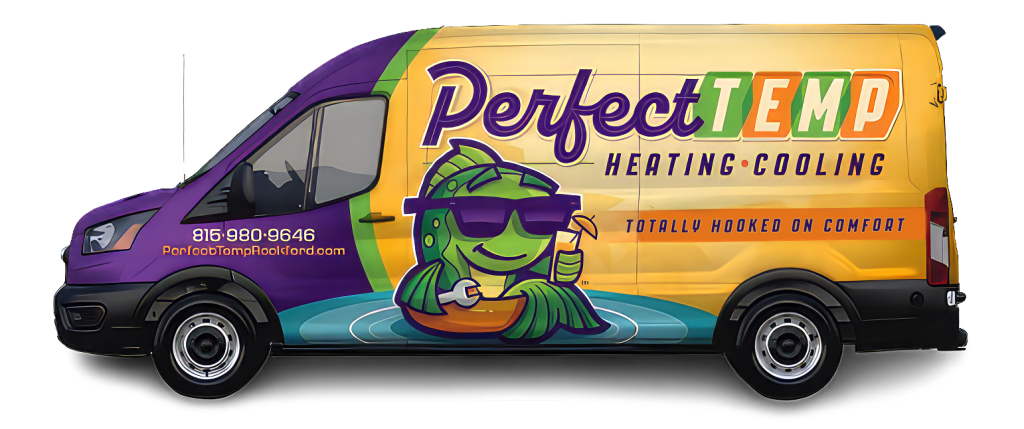Learning how to choose the right furnace for your home can feel overwhelming. With so many furnace options on the market, how do you know which one is right for your family and budget? This guide will help you navigate the process of choosing the right furnace for your specific needs.
Understanding Furnace Types and Fuel Sources
The first step in choosing a furnace is understanding the different types and their fuel sources. Consider these options for your furnace purchase.
Natural Gas Furnaces
Natural gas furnaces are popular due to their efficiency and relatively low operating costs. These furnaces burn natural gas to create heat, distributed through your home’s air registers via ductwork. Natural gas is a common fuel source, powering many homes’ heat.
Electric Furnaces
Electric furnaces use electricity to heat your home. They may have lower upfront costs. However, their operating costs can be higher, especially with high electric bills. Electric furnaces boast high AFUE ratings between 95% and 100%.
Oil Furnaces
Oil furnaces are less common but suitable where natural gas isn’t available. Their operating costs tend to be higher than gas furnaces. However, oil furnaces provide reliable heat, especially in cooler temperatures.
Propane Furnaces
Propane furnaces offer another alternative without natural gas lines. These operate similarly to natural gas furnaces, using propane as fuel. Consider propane furnaces if you do not have access to natural gas or oil.
Evaluating Furnace Efficiency
When choosing a furnace, prioritize furnace efficiency. A more efficient furnace can lower your energy costs significantly.
Understanding AFUE Ratings
The Annual Fuel Utilization Efficiency (AFUE) rating is a key furnace efficiency metric. This rating shows how much fuel is converted to usable heat. This can affect energy bills each month.
For example, an 80% AFUE furnace converts 80% of its fuel into heat. The remaining 20% is lost. ENERGY STAR recommends furnaces with a 90 or higher AFUE rating for optimal efficiency and energy savings. For maximum energy savings, you may consider a rating furnace.
Here’s a breakdown of AFUE ratings for choosing a size furnace:
| AFUE Rating | Efficiency Level | Best For |
|---|---|---|
| 80-83% | Standard Efficiency | Mild Climates |
| 90-95% | High Efficiency | Moderate to Cold Climates |
| 96-98.5% | Ultra-High Efficiency | Very Cold Climates |
Sizing Your Furnace Correctly
Choosing the correct furnace size for your home is crucial. A furnace that’s too small won’t heat effectively. An oversized unit can operate inefficiently with increased wear and tear.
The Importance of Professional Sizing
Don’t estimate furnace size based on square footage alone. Professional HVAC technicians calculate the right size. Getting the proper furnace size will ensure air heat is properly installed in your house.
Technicians use a Manual J Load Calculation for accurate sizing. This considers several factors to find the proper furnace size and the operating costs to run your heat furnace.
- Home size and layout.
- Insulation levels.
- Window efficiency.
- Local climate.
- Number of occupants.
Considering these factors ensures optimal comfort and efficiency. This allows you to select the correct size furnace, contributing to furnace efficiency.
Considering Additional Features
Look for additional features that can improve comfort and efficiency. Thinking about these factors can help you when learning about air quality or how furnaces operate.
Variable-Speed Blowers
Variable-speed blowers adjust output to your home’s heating needs. This creates consistent temperatures, better energy efficiency, and quieter operation. The variable speed blower’s role helps improve fuel utilization efficiency and reduce how often your furnaces require servicing. This creates lower monthly payments in some cases.
Two-Stage or Modulating Gas Valves
These systems operate at lower speeds in milder weather. This results in better fuel utilization and indoor air comfort. Consider this for optimizing fuel utilization efficiency. A heat exchanger and proper furnace installation improve a high AFUE rating further.
Smart Thermostat Compatibility
Choose a furnace compatible with programmable or smart thermostats. These devices create substantial energy savings, often reducing annual heating and cooling costs. A smart thermostat paired with a higher AFUE rating can drastically reduce energy costs. You can find a smart thermostat to install with the most efficient furnaces.
Evaluating Cost and Value
Consider both upfront and long-term costs when picking a furnace. This applies to natural gas furnaces, oil natural gas furnaces, propane furnaces, and other types of heat air systems.
Initial Investment
New furnace costs vary based on type, efficiency, and features. A midrange furnace typically costs between $1,500 and $6,000, plus installation. A Rheem furnace with an 80% AFUE rating costs around $1,488 before installation. Gas furnace costs vary depending on several factors. For the lowest initial investment, an electric furnace may be considered the most efficient and have the best rating cost.
Long-Term Savings
High-efficiency furnaces have a higher purchase price. However, a higher AFUE rating also provides better fuel utilization and higher efficiency, which can lower your long-term operating costs. A high-efficiency furnace with a properly installed heat exchanger helps ensure optimal operating costs. High-efficiency gas furnaces have high AFUE ratings. An efficient furnace reduces the frequency of that furnace’s required maintenance.
When comparing costs, consider the furnace brand, furnace size, operating costs, and overall furnace cost. While a heat pump and an electric furnace can reduce electric bills, gas furnaces typically still provide lower monthly payments and gas furnace costs overall. Your HVAC technician can assist you with more information.
- Potential energy savings.
- Available rebates and incentives.
- Expected furnace lifespan.
- Warranty coverage.
The Importance of Professional Installation
Proper installation is crucial for optimal furnace performance and how the furnace works. This is essential whether you select a heat pump, a high-efficiency furnace, or even an older furnace. Consulting an HVAC technician about furnace efficiency and getting your furnace installed correctly will give you optimal furnace heat.
Choosing a Reputable HVAC Company
Check online reviews for HVAC companies. Look for consistent quality service and positive feedback. Be sure to also ask them how the furnace works, if the size furnace is right for your house, how the furnace is installed correctly, about oil natural, and about how furnaces operate. Be sure your furnace is installed by an HVAC company to ensure you chose the correct size furnace and know what the operating costs will be. Choosing the proper furnace size will save you monthly payments and help your furnaces work efficiently and better transfer heat.
Maintaining Your New Furnace
Proper maintenance is essential for your furnace’s lifespan and efficiency after installation.
Regular Maintenance Tips
- Change air filters regularly.
- Schedule yearly professional tune-ups.
- Keep the furnace area clean and clear. Keeping an efficient furnace in top shape helps to transfer heat more efficiently.
- Watch energy bills for sudden spikes, indicating potential problems.
FAQs about How to Choose the Right Furnace
How do I know what kind of furnace I need?
Consider your climate, home size, insulation, and energy costs. A professional HVAC technician can do a home energy audit and give the best recommendation. Understanding how furnaces operate, including their fuel utilization and whether they offer oil or natural gas, is vital for informed choices.
How do you pick a furnace?
Consider fuel type, AFUE rating, size, features, and cost. Balance your budget and long-term savings. Ensure a professional does a load calculation for correct sizing. They can advise if an older furnace needs replacing. A rating cost of any efficient furnaces considered can also help decide which is the better value and improve overall furnace efficiency.
How many square feet will a 60,000 BTU gas furnace heat?
A 60,000 BTU gas furnace can generally heat 1,200-1,500 square feet. This depends on climate, insulation, and home layout. A professional load calculation is essential for accurate sizing. Consider your preferred furnace brand, furnace size needs, and whether your preference is an oil-natural or natural gas furnace. AFUE stands for Annual Fuel Utilization Efficiency.
How many square feet will an 80,000 BTU furnace heat?
An 80,000 BTU furnace usually heats 1,600-2,000 square feet. This can vary by home and climate. Consult a professional for accurate sizing. A higher BTU output might suit cooler temperatures but the fuel source (oil natural gas or natural gas furnace) also determines energy efficiency. Whether or not your older furnace needs to be replaced with a higher AFUE-rated one is best discussed with an HVAC professional.
Conclusion
Following expert tips on how to choose the right furnace ensures home comfort and energy efficiency. Considering fuel type, efficiency, size, and features helps balance upfront costs and long-term savings. This guide combined with help from a qualified HVAC technician empowers you to select the perfect heating solution for your needs. The best choice for you might be a heat pump, or a furnace with a high AFUE rating, high efficiency, and whether it can burn oil naturally or just be a natural gas furnace.
Whether you choose a high-efficiency gas furnace or alternatives like heat pumps, prioritize efficiency, comfort, and long-term value. With the right furnace and proper maintenance, you can enjoy warm winters and reasonable energy bills.
Contact us today for more information or to schedule a free consultation.


